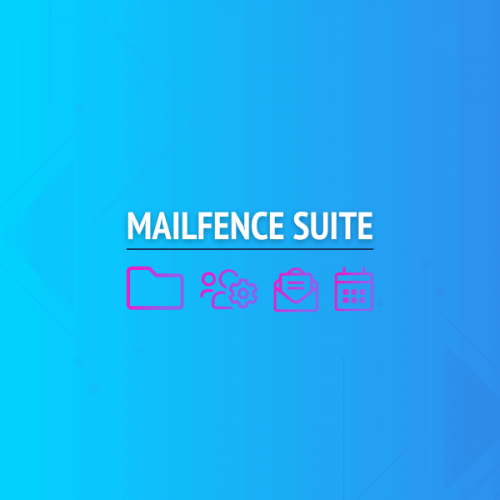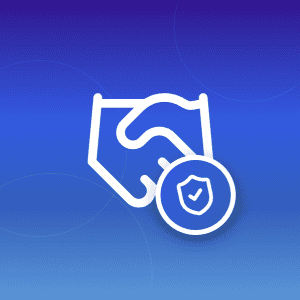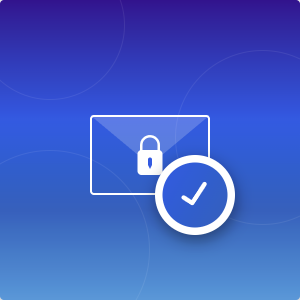If you’re reading this post, you are probably looking for a Gmail alternative. And we don’t blame you! Privacy concerns, spam, the ever-growing influence of Big Tech companies…
More and more people are deciding to leave Google products behind, and with good reason.
In this guide, we will cover:
- why you should stop using Gmail today, as well as the rest of the G Suite products (Google Drive, Google Calendar etc.);
- the best alternatives on the market in 2025;
- how to migrate your emails, events, contacts etc. easily from one service to another.
Let’s get started!
Get the latest privacy news in your inbox
Sign up to the Mailfence Newsletter.
A Brief History of Gmail
Gmail, launched by Google on April 1, 2004, marked a significant shift in the email industry.
Firstly, it was free. Secondly, it offered 1 GB of storage. This was revolutionary.
This meant user could keep their emails indefinitely instead of constantly deleting emails. To give you an order of scale, Hotmail and Yahoo offered 2Mb of free storage at the time. Another killer feature offered by Gmail included conversation threading. At the time, this was revolutionary: it allowed emails to be grouped together and be read as a single conversation.
Gmail also offered a strong spam filter, as well as advanced search functionalities by leveraging Google’s core Search business.
It can be hard to believe today in 2025, but Gmail was initially an invite-only model. This created an air of exclusivity, driving interest and demand. Word-of-mouth spread quickly, contributing to its rapid growth. In just a few years, Gmail became a dominant player in the email industry. By combining generous storage, innovative features, and effective marketing, Gmail became a major player in the email market shortly after its launch.
However, Gmail also introduced a new business model: surveillance capitalism.
Google would analyze user data to deliver targeted ads. Not just the subject lines, but the entire content and attachments of emails! This approach, now common across digital platforms, demonstrated how a “free” product is never truly free. Either you pay with your wallet, or with your data.
This shaped a whole new era of data-driven advertising. Facebook, Instagram, and Amazon: all rely on your data for their business model. Over time, Gmail integrated with other Google services, which made it harder for people to move to other services (a technique called “vendor lock-in”).
However, as revolutionary as Gmail promised to be, it posed many questions in terms of online privacy…
Is Gmail Truly “Private and Secure”?
If you search for Gmail, you will find the following result:
Their title reads: “Gmail: Private and secure email at no cost”. But is that really true? Furthermore, is it possible to have privacy and security at no cost? To have your cake and eat it?
Let’s cut straight to the chase: no, Gmail is not a private and secure email, plain and simple.
Firstly, the issue with Gmail (and G Suite products as a whole) is that they do not use end-to-end encryption (E2EE). Google claims your emails are safe but only encrypts your emails via STARTTLS, which is not actual end-to-end encryption.
Why is this important? With E2EE, only the sender and receiver have access to the content of an email. The sender has the original (unencrypted) email, and the intended recipient has the private key to decrypt the message. Any third party that manages to intercept the message in transit will not be able to read the encrypted message (it will be illegible).
Secondly, Google made its entire business from user data. It was true with Google Search, and it was also true with Gmail. If you had a Gmail account, your email contents were being scanned to build a profile of you and sell you ads. Just sent an email to your partner about a hotel in Bali? You would get bombarded with ads on Google about the best ones.
But it wasn’t only Google that was reading your emails. Third-party developers could also access your messages if you weren’t careful with your permissions. And although Google says it doesn’t scan your email contents anymore, you have to take their word for it.
In 2025, we take free products and services for granted, forgetting what we give in exchange.
The convenience of not paying money makes it easy to overlook the fact that companies are collecting personal information in exchange. Many users, focused on the benefits they get, don’t stop to think about what they’re giving away.
This casual attitude toward privacy has become the norm. When we click “agree” on terms and conditions, we usually don’t read them, missing the details about how our data will be used. As a result, the real cost of these free services—our personal information—is often ignored. We trade privacy for convenience, without fully realizing the long-term implications.
But if you are one of those who believes we need to wrestle back our privacy, then it’s time to search for a Gmail alternative.
How to Choose a Gmail Alternative?
Here are some of the features you should look for when exploring a Gmail alternative.
A Gmail alternative should have good encryption methods
Your Gmail alternative should have multiple encryption methods, including symmetric and asymmetric encryption. If you don’t know the difference, don’t worry, we have an extensive guide for you.
Encryption ensures only the sender and receiver can access the content of the emails. And while encryption can sound complicated, it’s actually just as easy as entering a password!
Full suite of productivity tools
If you were using Gmail, chances are you were also using other G Suite products: Google Drive, Google Calendar, Google Docs etc. However, all of these tools feature the same privacy concerns as Gmail.
So a good Gmail alternative should provide you with all these additional tools. And they should all integrate seamlessly. If you’re considering alternatives to Google Workspace, start with our detailed comparison of secure business email hosting options, covering 7 major providers.
A Gmail alternative should have a great mobile app
Let’s face it: in 2025, you spend more time on your smartphone than on your computer.
So the Gmail alternative you choose should have a great mobile app which is easy to use.
Easy import/export of your data
Most providers try to make it really hard to switch to another service. Cancelling your plan, finding how to export your data… Everything seems to be buried under layers of menus and buttons.
We believe that interoperability is key to a good product and user experience. This means you should have access to your account through third-party email clients like Apple Mail. And you should be able to easily import and export your data with just a few clicks.
Mailfence: the Best Gmail Alternative?
There is a sea of email providers out there, and it can be hard to know which one you can trust.
While Mailfence is not perfect, it certainly puts your privacy before profits. We do not track our users, there are no hidden cookies, and we never track your behavior. Our privacy policy is extremely easy to read, and there are no hidden asterisks.
Our servers are based in Belgium, which has strict privacy laws. What’s more, we do not use Google Analytics or any other analytics, nor do we share any information with advertisers. We believe that privacy is a right and not a feature. That’s why we offer you several encryption methods, both on our web app and through our mobile app.
What does Mailfence offer
We also offer a complete range of productivity tools on top of emails:
- use the Mailfence calendar as an alternative to Google Calendar and boost collaboration and convenience without compromising security & privacy;
- Mailfence Documents is our alternative to Google Drive and Google Docs. You can store, edit, and share files with your family and friends. You can also use public folders that allow you to publicly share docs with non-Mailfence users just by sharing a URL;
- Mailfence Contacts is your complete contact management software that allows you to manage and share contact data;
- With Mailfence Groups you can share data and collaborate securely. Some possibilities include: view the shared mailbox, view the shared group Contacts, share the group Calendar. You can also use the drop folder feature to securely send files without having to attach them to emails. For the complete list of possibilities, check out our Mailfence Groups blog post.
But if we don’t sell our user’s data, how do we make money? Through the subscriptions of our users. Although our free plan offers you most of what you need, our various paid plans allow you to access more storage and connectivity features.
Finally, we make it extremely easy for you to switch providers. You can sync your mailbox with other email clients to keep everything in one place with either IMAP, POP, or Exchange ActiveSync. You can therefore access your emails anywhere you want. In case you would like to delete your Mailfence account, there are no tricky steps. Within a few clicks, you can delete your account and data (we would be sad to see you leave, though).
That’s for this Guide on Finding A Gmail Alternative!
Congratulations on making it this far! If you think Mailfence is the best Gmail alternative for you, you can create your free account today.
Follow our different instructions on how to migrate your emails from Gmail to our alternative, depending on if you have a small or large amount of data to migrate. If you want to migrate from G Suite to Mailfence, please follow our specific instructions for your documents, calendars and contacts.
Got any questions? Feel free to reach out to us at any time at support@mailfence.com
Looking for European alternatives to Big Tech products? Check out our guide here.
FAQs: Gmail Alternative in 2025
Gmail is not truly private or secure. It lacks end-to-end encryption, analyzes user data to monetize it, and integrates tightly with Google’s advertising-driven ecosystem. If you value privacy, switching to a secure Gmail alternative ensures your data isn’t tracked, scanned, or shared.
A good Gmail alternative should offer end-to-end encryption, strong privacy policies, seamless productivity tools (calendar, contacts, documents), easy mobile access, and the ability to import/export your data without restrictions.
Mailfence prioritizes privacy and security with features like end-to-end encryption, no tracking or advertising, and servers located in Belgium under strict privacy laws. It also offers productivity tools like a calendar, cloud storage, and contacts—all without compromising your data.
Migrating to Mailfence is simple and streamlined. You can transfer your emails, contacts, calendars, and documents using Mailfence’s step-by-step instructions, whether you have a small or large amount of data to move



